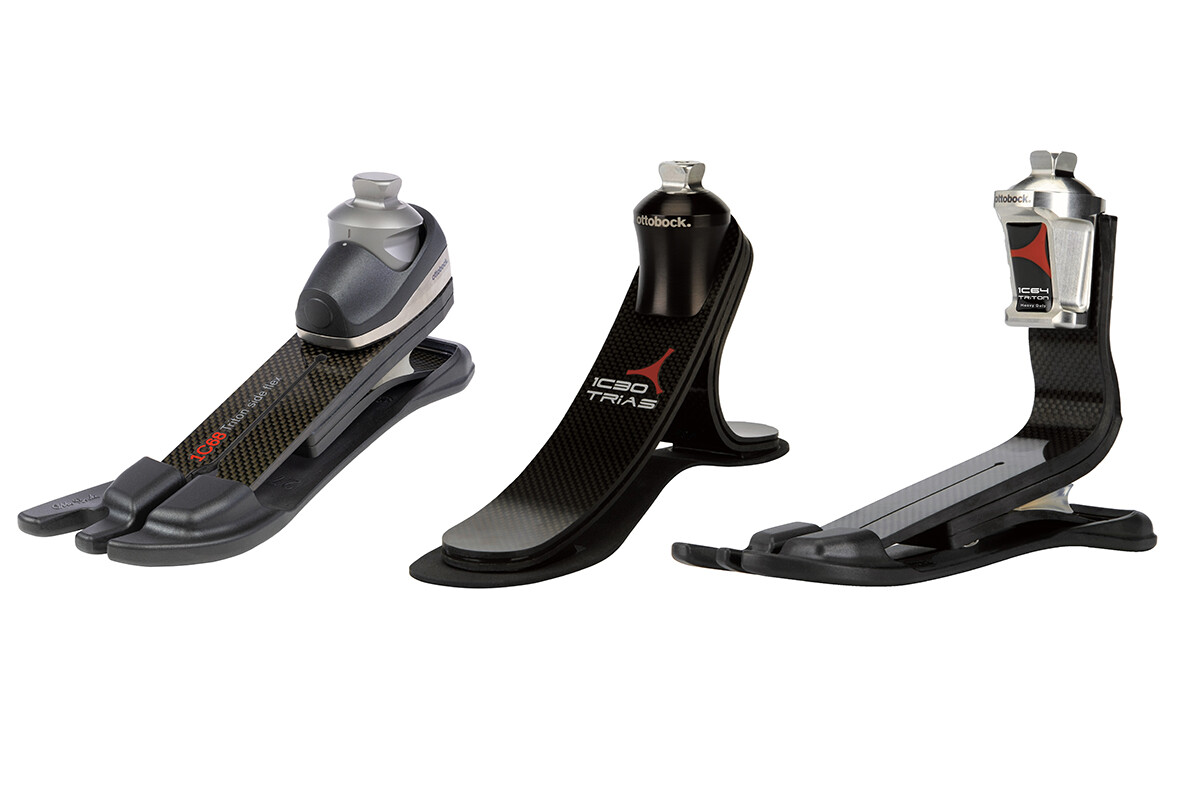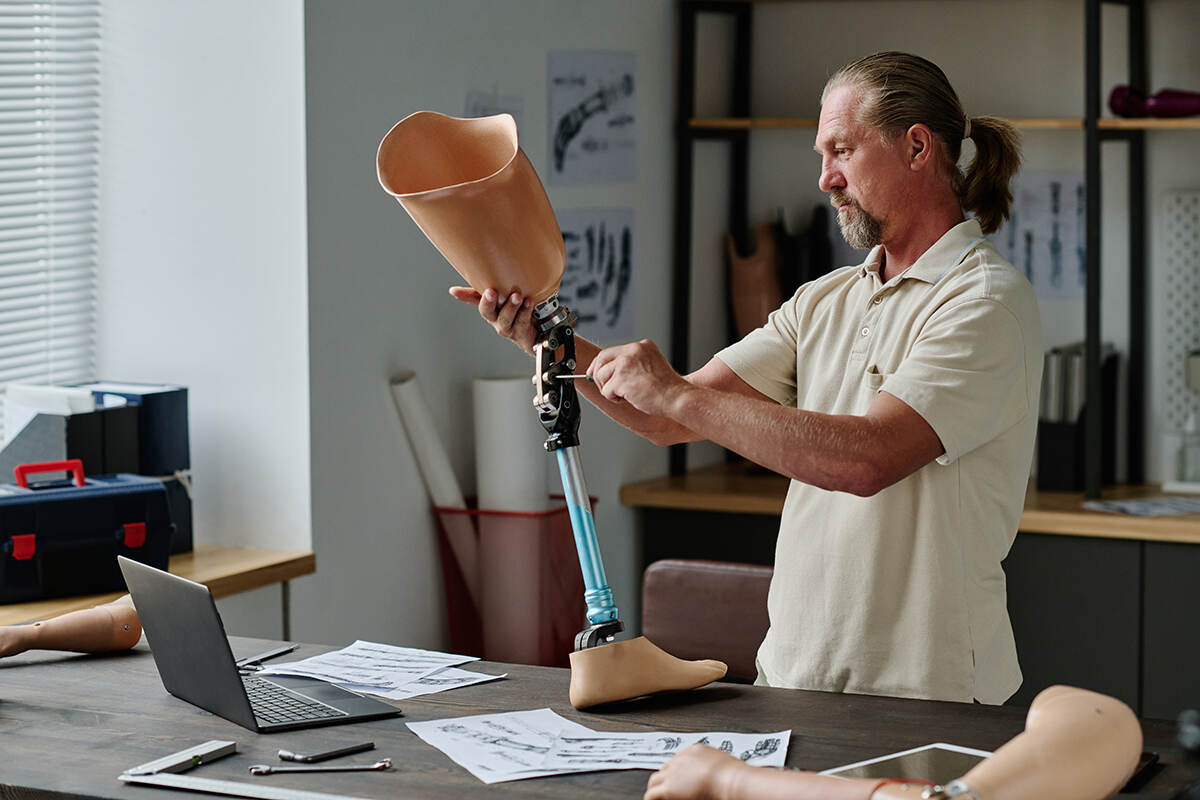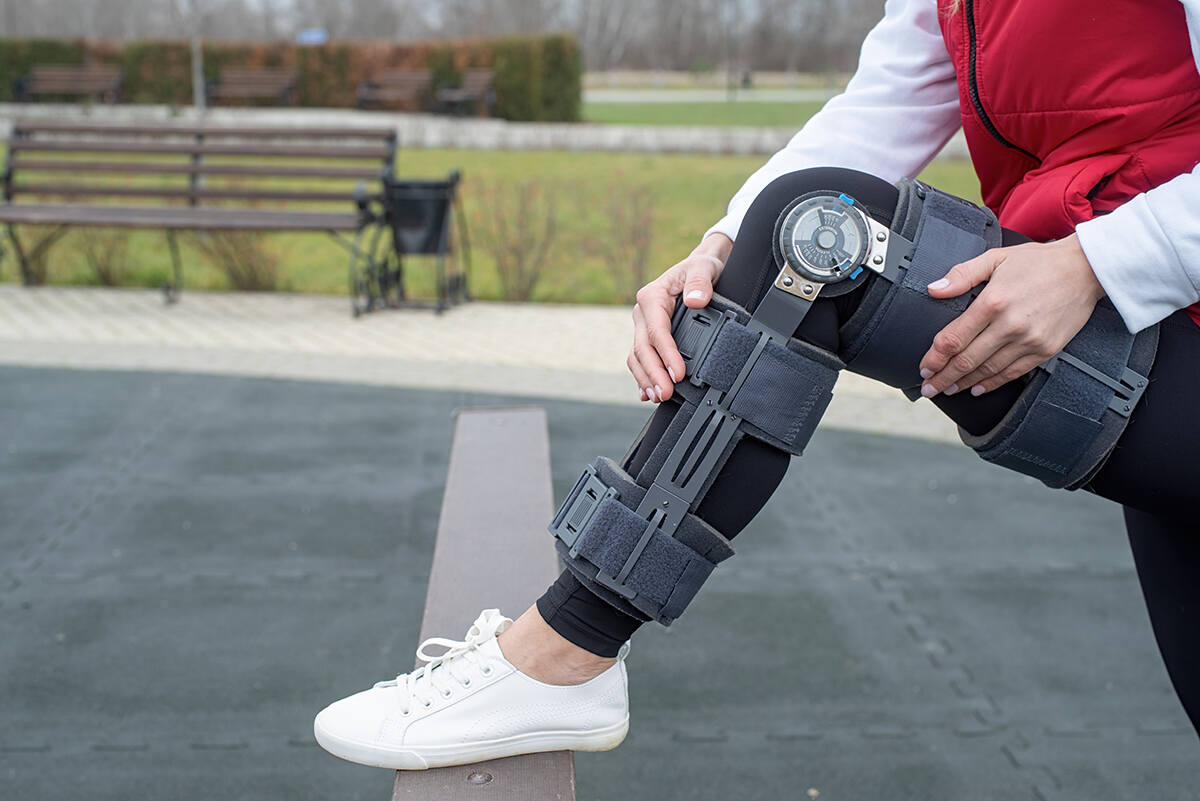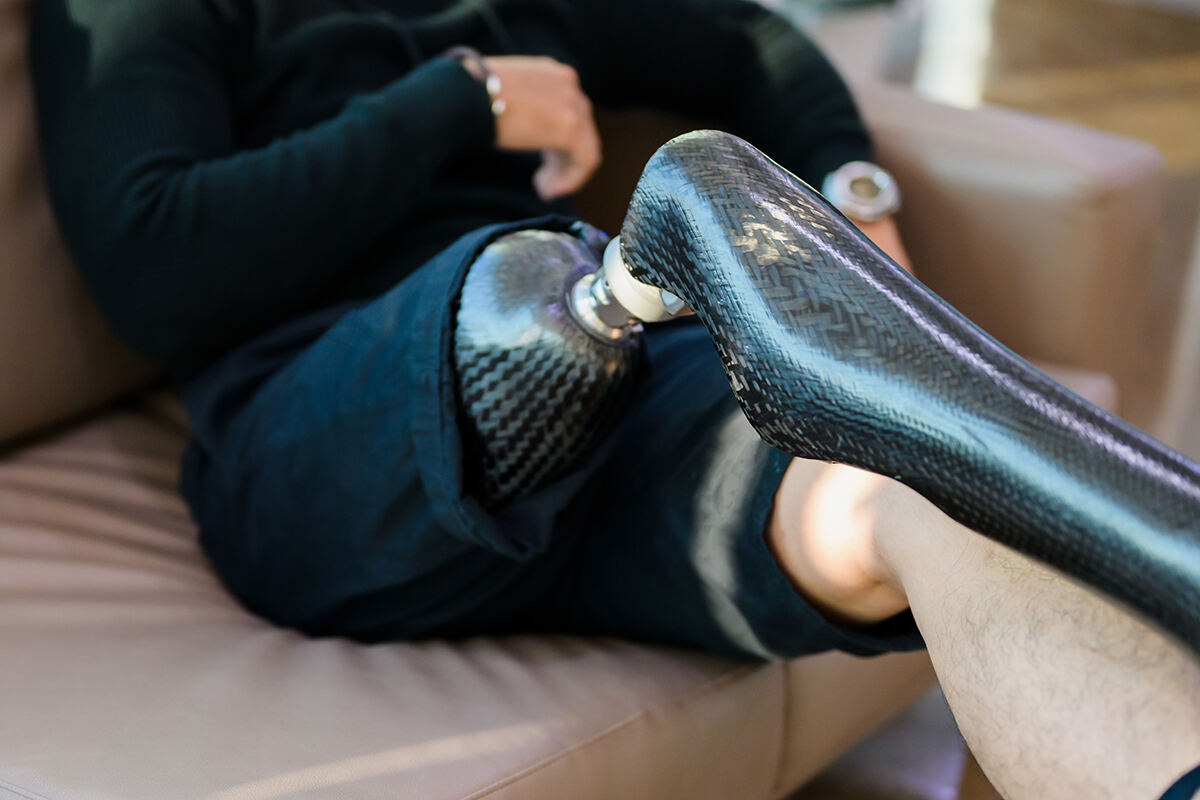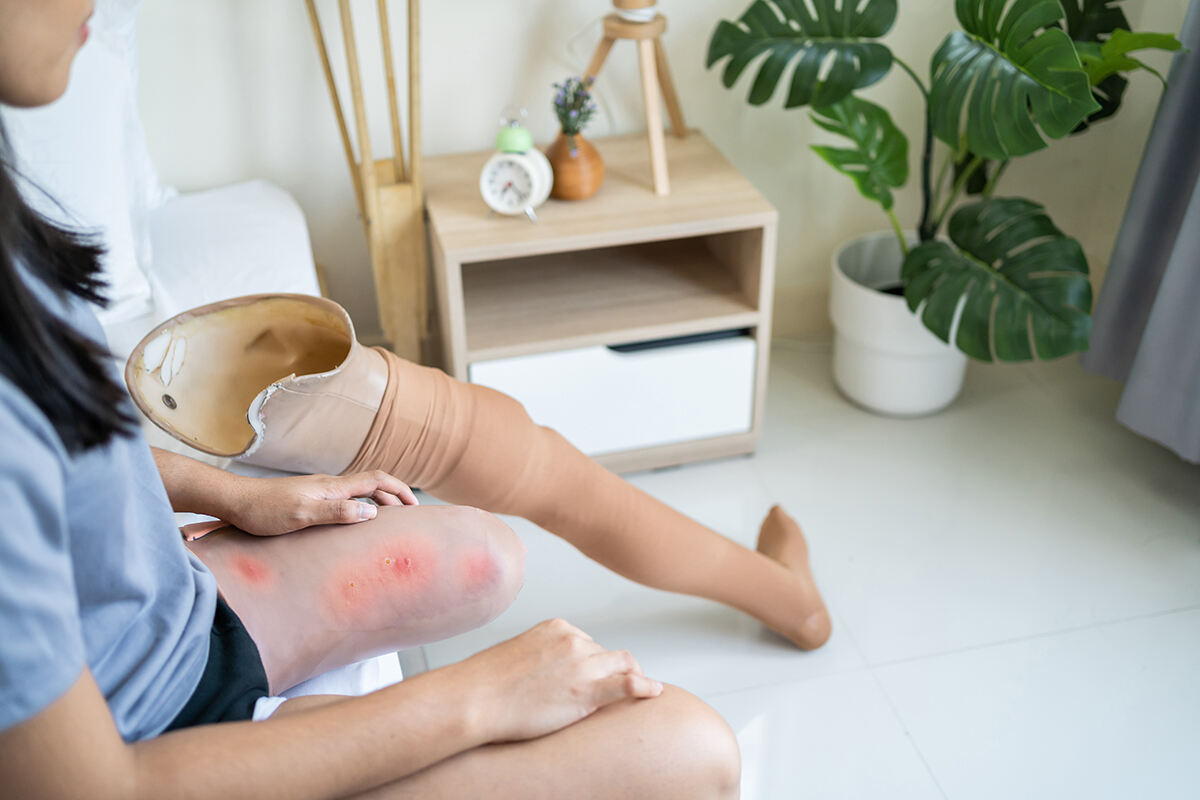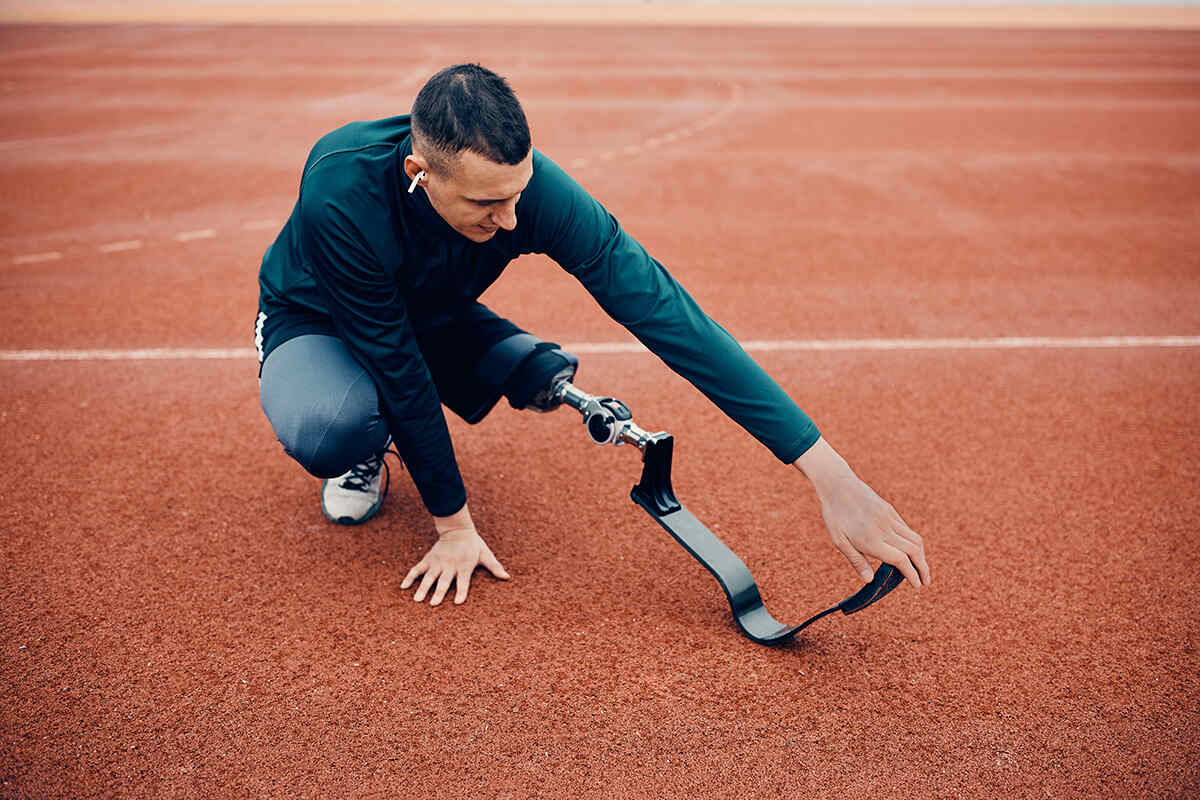In the quest for the most advanced arm prosthetics, futuristic designs are merging human-like functionality with technological innovation. As you navigate through the latest in futuristic prosthetic arm development, this article guides you through the enhancements, from mind-controlled capabilities to sensory feedback, that are elevating the standards for what artificial limbs can achieve.
Key Takeaways
- Prosthetic arm technology has significantly advanced, with bionic arms enhancing user sensation and control, myoelectric prosthetics setting new standards for functionality, and neural signal integration allowing for seamless control and improved quality of life for amputees.
- Machine learning and AI are revolutionizing prosthetics by decoding muscle signals for responsive movement and optimizing prosthetic limb performance through dynamic adjustments based on user gait and terrain.
- Surgical techniques like Targeted Muscle Reinnervation and Regenerative Peripheral Nerve Interfaces, along with cutting-edge prosthetic designs like the LUKE Arm and Atom Limbs’ touch-sensitive arms, are paving the path towards highly functional and intuitive prosthetic limbs that closely mimic natural limb functionality.
Advancements in Prosthetic Arm Technology
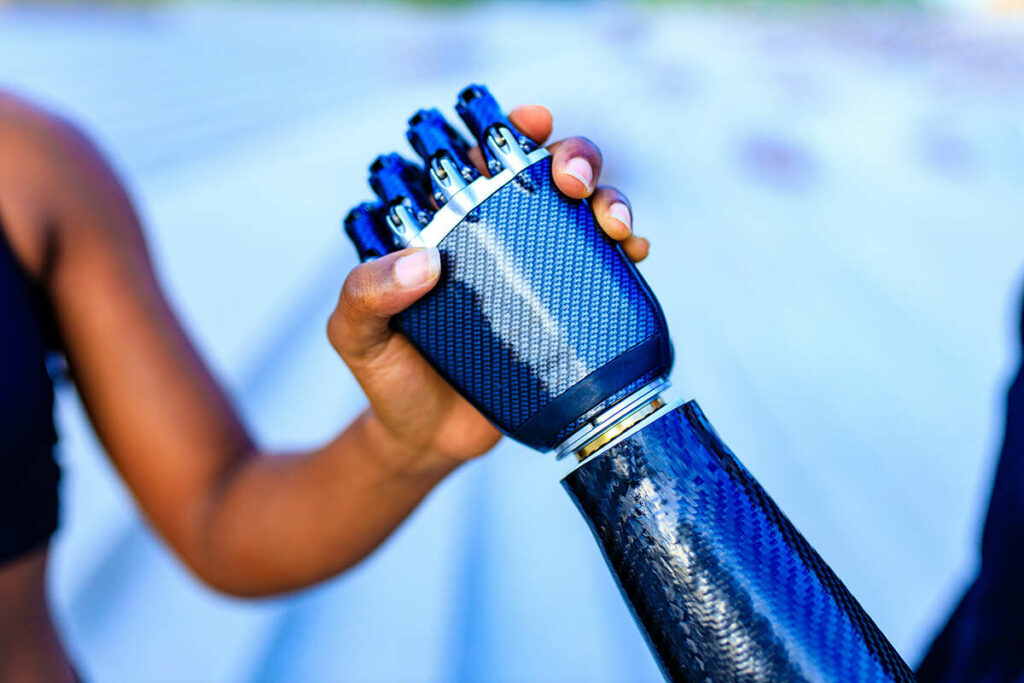
Modern prosthetic technology has come a long way since the days of wood and metal appendages. Today, prosthetic limbs are not just replacements for lost body parts, but sophisticated devices that offer a level of functionality and aesthetic appeal that was once the stuff of science fiction. Welcome to the world of bionic arms, where technology and touch intermingle in a symphony of seamless control and intuitive movement.
The major milestones in our journey towards highly advanced prosthetic limbs include:
- The leap towards bionic arms
- The adoption of myoelectric prostheses as the new standard
- The innovative integration of neural signals for seamless control
Each of these technological advancements is transforming the lives of upper limb amputees, offering them an opportunity to regain lost capabilities and live life to the fullest.
The Leap Towards Bionic Arms
The advent of bionic arm technology signifies a transformative shift in prosthetic technology. They transcend the role of simple limb replacements, standing as a tribute to relentless human innovation and determination. Bionic arms enhance the user’s sensation, better integrate the limb aesthetically, and offer superior controllability, allowing users to perform complex tasks with ease compared to traditional body powered prosthesis.
These marvels of modern engineering are a result of several exciting advancements, including the use of sensors to interpret muscle signals, improvements in materials and manufacturing, and the integration of robotics and artificial intelligence.
Bionic arms typically incorporate materials such as:
- Aluminum
- Silicone
- TPE
- Rubber
- Plastic
- Titanium
- Carbon fiber
These materials are chosen for their strength, light weight, and durability, which are key attributes for exceptional performance and user comfort.
Myoelectric Prosthetics: The New Standard
Myoelectric prosthetics, including the myoelectric prosthesis, are now recognized as the benchmark in prosthetic technology. These incredible devices offer a leap forward in terms of control and functionality. By utilizing electrodes placed on the skin to detect muscle signals, these prosthetics provide a significant improvement over traditional body powered prostheses.
The benefits of myoelectric prosthetics are numerous. Some examples include:
- Enhanced appearance
- Reduced phantom-limb pain
- Greater acceptance for light-intensity work
- The capacity to carry out multiple functions
With a wide variety of myoelectric prosthetic arms available, such as the Taska Hand, bebionic, i-limb, and Michelangelo Hand, users have an array of incredible options to choose from, including those with multiple grip patterns.
Integration of Neural Signals for Seamless Control
The integration of neural signals in prosthetic devices marks a significant milestone in the journey towards intuitive and seamless control. By facilitating direct communication between the brain and the prosthetic limb, these devices achieve:
- increasingly precise and natural control of the limb’s movements
- improved functionality and dexterity
- enhanced sensory feedback
- reduced cognitive effort for the user
This advancement in technology holds great promise for improving the quality of life for individuals with limb loss or limb impairment.
Exciting opportunities await in the field of neural integration. Some of these opportunities include:
- Advancements in tissue-electronic interfacing
- Replicating natural patterns of neuronal activation
- Ongoing efforts to develop nerve signals traveling from the artificial limb back to the user
These advancements represent a promising future for amputees.
The Role of Machine Learning in Prosthetic Limbs
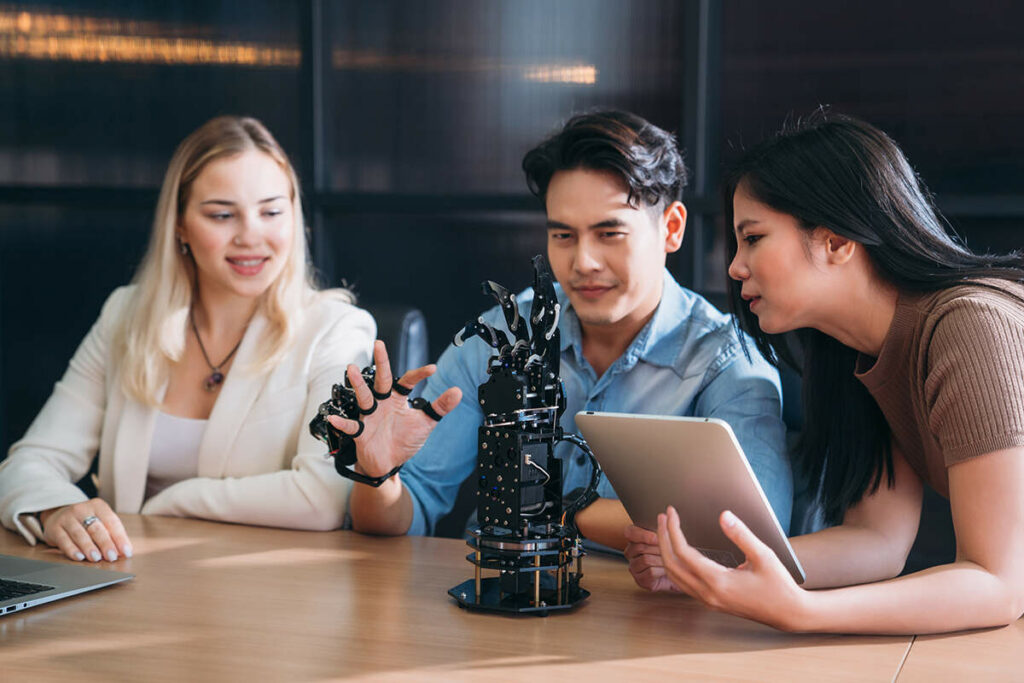
The use of machine learning in the field of prosthetics is a game-changer. This technology plays a big role in decoding muscle signals for prosthetic limbs, utilizing advanced pattern recognition algorithms to seamlessly match myoelectric patterns to specific arm or hand actions in real time. The result? Highly responsive and natural movement that is a testament to human ingenuity.
But that’s not all. Artificial intelligence (AI) significantly enhances the performance of prosthetic limbs by utilizing sensors and data from the limb to gather external information. By monitoring the user’s body state and automatically adjusting the prosthetic settings, AI provides an optimized functionality that is more in tune with the user’s needs.
Decoding Muscle Signals for Responsive Movement
Interpreting muscle signals is fundamental to the functionality of advanced prosthetics. Through the use of advanced algorithms, these signals are interpreted and transformed into actionable commands, enabling the prosthetic limb to:
- move in response to the user’s intent
- grasp objects
- perform delicate tasks
- provide a natural range of motion
This seamless restoration of lost limb function is nothing short of a medical marvel.
The improvement in the responsiveness of prosthetic limbs through muscle signal decoding is truly exciting. It has enhanced the control of the prosthetic hand using muscle signals from the amputated limb, thanks to signal processing algorithms which have significantly improved the operation of prosthetic limbs.
Enhancing Prosthetic Limb Performance with AI
Artificial intelligence significantly contributes to the increased performance of prosthetic limbs. By utilizing advanced AI-powered sensors to monitor the user’s gait and the terrain, the prosthetic can dynamically adjust the stiffness and damping of the joints for optimal functionality.
The combination of AI and machine learning technologies is driving the development of more natural and intuitive prosthetic limbs. By empowering users with mind-controlled prosthetics and sensory feedback, this technology is bringing us closer to creating limbs that closely mimic the function and control of natural limbs.
Surgical Innovations Paving the Way for Futuristic Prosthetics
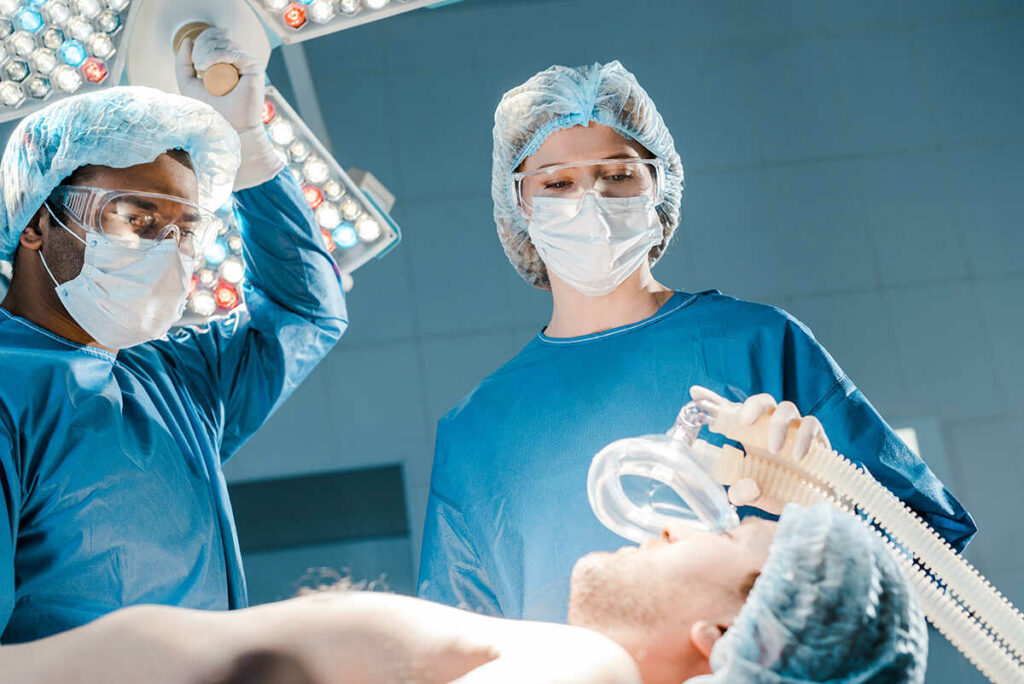
Diving deeper into the realm of advanced prosthetics, it becomes evident how crucial surgical innovations are. Techniques such as Targeted Muscle Reinnervation (TMR) and Regenerative Peripheral Nerve Interfaces (RPNI) are playing a vital role in this space, paving the way for the development of futuristic prosthetic limbs.
These surgical techniques are enhancing control and amplifying neural signals for better functionality. The result? A significant leap forward in the journey towards creating prosthetic limbs that can mimic the functionality and appearance of natural limbs.
Targeted Muscle Reinnervation (TMR)
Targeted Muscle Reinnervation, or TMR, is a surgical nerve-transfer operation designed to empower amputees with more intuitive control over their prosthetic limbs. By rerouting severed motor nerves to intact muscles, TMR allows amputees to control their prosthetic limbs through natural muscle contractions.
The benefits of implementing TMR in prosthetic limbs are tremendous. Improved control of the prosthetic arm, reduced neuroma pain, and enhanced functionality are just a few examples. It’s incredible to think about how far we’ve come in the field of prosthetic technology.
Regenerative Peripheral Nerve Interfaces
Regenerative Peripheral Nerve Interfaces, or RPNIs, offer a promising future for prosthetic limbs. By providing a means to amplify neural signals through implanted free muscle grafts, RPNIs contribute to sustainable and improved prosthetic control.
The benefits of using RPNIs for prosthetic limbs are numerous. Improved prosthetic control, prevention of painful neuromas and phantom limb pain, and an overall enhancement in prosthetic functionality are among the many benefits that RPNIs offer. It’s truly an exciting time in the field of prosthetic technology.
The LUKE Arm
Introducing the LUKE Arm, a modular marvel of the prosthetics world. This innovative prosthetic arm, developed by DEKA Integrated Solutions Corp, is the first of its kind to provide a commercially available powered shoulder, offering nuances such as mimicked touch sensation and object-related sensory feedback to the brain.
The LUKE Arm is an embodiment of advanced prosthetic technology. Its features include:
- Innovative modular shoulder configuration that offers adaptability for users with various amputation levels from mid-upper arm to mid-lower arm
- Up to ten powered joints
- Independent electronics in the hand and forearm
- Constructed with metal motors and parts with a clear silicone ‘skin’
Customization for Various Levels of Amputation
One of the most impressive features of the LUKE Arm is its customization capabilities. This innovative prosthetic arm can be tailored to fit different levels of amputation, providing a personalized and tailored fit for each user.
The LUKE Arm offers incredible customization options for different levels of amputation including transradial, transhumeral, and shoulder-level amputations. This ensures that users can have a prosthetic that is perfectly suited for their specific needs. It’s truly a testament to the remarkable advances in prosthetic technology.
User Experiences with the LUKE Arm
The LUKE Arm has received overwhelmingly positive feedback from users. It has greatly enhanced their daily lives by enabling them to smoothly control multiple joints, instead of the labor-intensive process of operating one joint at a time.
Users have reported a noticeable improvement in their ability to control the arm over time, leading to enhanced performance of daily tasks and a greater sense of control and functionality. It’s amazing to see how this innovative prosthetic arm is making a significant difference in the lives of its users.
Atom Limbs’ Vision
Atom Limbs is a pioneering company, pushing the limits of prosthetic technology. Their vision for the future involves creating artificial limbs that feel near-indistinguishable from natural ones, capable of near-full human range of motion, and able to restore a basic sense of touch.
Atom Limbs is making incredible strides in developing artificial arms that not only restore a basic sense of touch but are also capable of near-full human range of motion, including finger movements, through non-invasive mind control techniques. This combination of innovations is paving the way for a future where prosthetics offer full mobility and independence.
Touch Sensitivity and Real-Time Feedback
Atom Limbs’ development of touch-sensitive prosthetic arms is revolutionizing the field. These prosthetics enhance:
- Control
- Temperature detection
- Pain perception
By sending computer-generated touch signals back to the brain, control signals play a vital role in significantly improving the user experience.
The intrinsic feedback provided by these prosthetics not only enhances usability but also facilitates social interactions. By allowing users to perceive motion and receive mechanical feedback in a seamless manner, these prosthetics are bringing us one step closer to the ideal of prosthetics that truly mimic the functionality and feeling of natural limbs.
The Path to Full Mobility and Independence
Atom Limbs’ vision extends beyond touch sensitivity and real-time feedback. They aim to provide full mobility and independence to amputees through their innovative technologies. By offering mind-controlled operation and providing almost full human range of motion, Atom Limbs’ prosthetics are significantly improving the quality of life for amputees.
The company’s innovative technologies are making a significant difference, improving the quality of life for amputees and offering them the chance to regain their independence. These advancements are a testament to the incredible potential of advanced prosthetic technology and the bright future that lies ahead for amputees worldwide.
Prosthetic Arms in Daily Living
The influence of advanced prosthetic arms transcends the field of medical technology, permeating the daily lives of users. These devices are transforming the daily lives of amputees, allowing them to perform basic tasks with ease.
Efforts are being made to overcome barriers in accessibility and affordability, making these life-changing devices available to a wider audience. From low-cost options without compromising on functionality to personalized prostheses at discounted prices, it’s an exciting time in the world of prosthetics.
Tasks Performed with Ease by Advanced Prosthetics
Advanced prosthetics are revolutionizing the way amputees handle a variety of daily tasks, making them much easier to perform. From eating and dressing to more complex tasks, these devices are restoring function and improving the quality of life for individuals with limb loss.
With advancements such as game-based training and the development of prosthetic limbs with a sense of touch, the performance of daily tasks has been greatly improved. It’s truly amazing to see how far we’ve come in the field of prosthetic technology.
Overcoming Obstacles in Accessibility and Affordability
Despite the impressive progress in prosthetic technology, significant challenges remain. Chief among these is the need to make these advanced devices more accessible and affordable. However, initiatives are being taken to tackle these challenges head on.
From the production of low-cost polypropylene plastic prostheses to the development of 3D-printed bionic arms that are significantly cheaper than existing prosthetics, efforts are being made to bring these life-changing devices to a wider audience. It’s an exciting time in the world of prosthetics, and the future looks bright.
Summary
We’ve come a long way in the field of prosthetics, from rudimentary replacements to advanced devices that mimic the functionality and even the sensation of natural limbs. With the integration of cutting-edge technology, surgical innovations, and a relentless pursuit of improvement, the future of prosthetics is bright and filled with promise. The future is here, and it’s exciting.
Frequently Asked Questions
How much does an advanced prosthetic arm cost?
The cost of an advanced prosthetic arm can range from $20,000 to $100,000 for the latest myoelectric arm technology, but there are cheaper options available as well. Prices can vary based on the functionality and technology used and also where you are located.
Can you get a cybernetic arm in real life?
Yes, it’s possible to get a cybernetic arm, as demonstrated by a woman who received a groundbreaking bionic prosthetic that has greatly improved her quality of life. The technology fuses the bionic arm to the user’s skeleton and connects it with the nervous system using implanted electrodes.
What are the major advancements in prosthetic arm technology?
The major advancements in prosthetic arm technology include bionic arms, myoelectric prosthetics, and the integration of neural signals for more seamless control. These advancements have significantly improved the functionality and natural movement of prosthetic arms.
How does machine learning contribute to prosthetics?
Machine learning contributes to prosthetics by decoding muscle signals for prosthetic limbs, improving their performance and responsiveness. This helps individuals with limb loss regain more natural and precise control over their prostheses.





